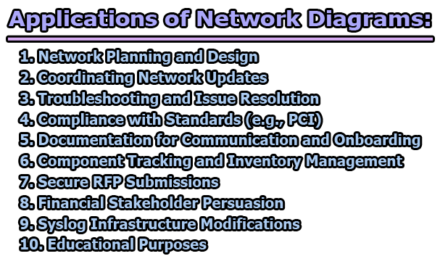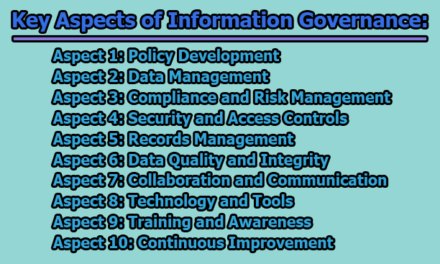Criteria for Selecting Electronic Resources
While selecting traditional library materials (Print Resources), the selector makes the decision to acquire an item with only limited consultation with subject specialists of different departments following established policies and guidelines. Electronic resources present a number of hurdles not encountered with traditional library materials. In addition to the criteria that apply to analog materials, electronic publications raise complex issues viz., access, licensing, pricing, networking, ownership and rapidly changing technology and standards. With EIRs, the selector cannot make a decision to acquire an e-resource in isolation and must liaise closely with other departments in the library to evaluate the suitability of a resource prior to the decision to acquire. Hence, while selecting and acquiring electronic information resources for any library the following criteria/ basic guidelines should be considered;
- Content: The intellectual content of the electronic information resource, whether purchased or free, must fit within the established parameters of the Parent body of the library. Typically such criteria might state that the resource:
- Support the major research aims and goals of the organization or institution.
- Complement or add depth to the existing collection supported by subject profiles.
- Be it of a certain quality, e.g., peer-reviewed, or have a reputable producer.
- Support the requirements of library users etc.
- Technical Requirements: Before accessing or purchasing an electronic resource, it is necessary to ensure whether the resources are compatible with existing library hardware and software. It is also necessary that the library has the capability to provide and effectively maintain access to resources on an ongoing and cost-effective basis. Evaluation should be in consultation with the appropriate technical staff and should include consideration of the following:
- Method of Access: It is necessary to know through what methods an e-resource can be accessed (e.g. stand-alone, remote via Web, local Web mount, or hosting)
- Authentication: What methods of authentication are available (e.g., IP filtering, login, and password)? Generally, access to e-resources via IP filtering is preferable because it typically provides simultaneous access to multiple users. Meanwhile, Access via login and a password is less preferred as it presents a number of challenges around dissemination and control of passwords.
- Compatibility: The e-resource should be compatible where local installation and maintenance are required. It should also be compatible with existing hardware and software supported by the library.
- Browsers: The issue of web browsers is very important. While selecting an e-resource, it is important to make sure that the resource can be accessed via different web browsers.
- Content format: EIRs should be available in multiple formats viz. ASCII, PDF, HTML, SGML, etc.
- Functionality and Reliability: In assessing the suitability of a resource in terms of functionality and reliability issues, the library may find it useful to evaluate the following aspects.
- Interface: The electronic resource interface should be user-friendly and easy to navigate.
- Search and Retrieval: e-resource should offer a powerful, flexible, and user-friendly search engine. Common features might include keyword and Boolean searching, full-text searching, truncation, browsing (index and title), relevancy ranking, thesaurus, and search history.
- Response, Reliability, and Availability: the resource should be available 24 hours a day, 7 days a week. The system should be technologically up-to-date and have the suitable capacity and network infrastructure to support multiple users.
- Integration: The system should support integration with other resources via reference and full-text linking.
- Vendor Support: Consideration needs to be given to how well established, and reliable an electronic resource vendor is and to the range of technical and user support services they are able to provide. It is useful to determine the range of vendor support services available, including:
- Trial evaluation and product demonstration: It is preferable for the resource to be available for trial and for the vendor to provide, if required, product demonstrations. Trials are particularly useful in supporting the evaluation process of a product in terms of technical issues and functionality and reliability.
- User training and support: If required, the vendor should be willing to provide initial and ongoing training, including the provision of documentation or online manuals, in the use of the product. This will help reduce the burden of training and development of documentation that might otherwise fall on library staff, and ensure that products are used effectively.
- Technical/customer support and system notification processes: The vendor should be willing to agree to service levels in terms of system availability and response times for the resolution of technical issues. The vendor should also have an advanced system notification process in place to effectively manage and communicate planned downtime, and content and platform change. Support provided should be timely, professional, and effective.
- Customization: Consideration needs to be given to the options available from the vendor for customization and branding of the product. This is often helpful in giving products used within the library a similar look and feel.
- Data security and archiving: Consideration should be given to how frequently system data is backed up and what will happen to the resource and library patrons’ ability to access it if the provider declares bankruptcy or decides to liquidate. If backup data is offered in CD-ROM or DVD format consideration needs to be given to the library’s capacity to manage archiving and access in this format and to the features that might be lost compared to the original resource.
- Bibliographic data provision: If required, the vendor should be able to provide URLs or bibliographic data in the library’s preferred file format which adhere to appropriate quality standards. This again reduces the burden on the library in setting up links or creating catalog records for access.
- Statistical reporting: The availability of quality statistical data is important in understanding how well resources are used and how cost-effective they are compared to other products. This is particularly important in supporting renewal and de-selection decisions. The vendor should provide quality statistical reporting following recognized standards such as ICOLC (International Coalition of Library Consortia)’s Guidelines For Statistical Measures of Usage of Web-Based Information Resources and/or COUNTER (Counting Online Usage of Networked Electronic Resources)’s Code of Practice.
The vendor should be stable and reliable and offer technical support. Change of vendors will occur only when a new vendor can deliver a superior search interface, enable greater and more reliable remote access at a reasonable cost, or provide other key factors, such as archival.
- Supply: Unlike print subscriptions, there is no standard model for the pricing of e-publications. It is important to consider the range of purchase models available and determine which one best meets the needs of the library in terms of access and archival rights and value for money.
- Purchase models and pricing: Selectors should carefully review the pricing models available for the resource under consideration as there is no standard pricing model for electronic resources. Pricing models are often based on a 13 number of criteria and variables such as the size of the user population and the number of simultaneous users. One important pricing model for subscription-based electronic journals, packages of e-books, databases, and other similar resources is one based on FTE (full-time equivalent).
- The number of users and sites: The number of users and sites is likely to have an impact on pricing. The number of users required in a multi-user license should be based on anticipated demand. Where numbers are based on FTE it should be based on the size of the actual user group and not the total user population, this is particularly important in selecting specialized resources with a specific and limited target audience.
- Backfiles, archiving, and post-termination rights: The purchasing or leasing of electronic data should include provision for perpetual access to that data. Following any termination of the license agreement, the institution’s perpetual electronic access to the previously subscribed content should be guaranteed. In such cases, information needs to be obtained to understand likely ongoing access and maintenance costs of content acquired and archived to date.
- Cancellation rights: Consideration needs to be given to the terms and conditions around cancellation. This might be canceling a bundled deal and moving to selected content or moving to outright cancellation or cancellation of linked print products. Models that impose ‘no print cancellation’ clauses or impose limits on the number of titles or financial penalties should be avoided.
- Invoicing: Separate invoicing for individual members should be available where the purchase is as part of consortia. Pricing should be transparent with content and access fees clearly indicated as separate costs.
- Renewals: The vendor should notify the library at least 2 months in advance prior to the subscription renewal date. Where the renewal is as part of a consortium subscription, the vendor should seek confirmation from the individual library prior to renewal.
Reference: Johnson, S. et al (2012). Key Issues for e-Resource Collection Development: A Guide for Libraries. International Federation of Library Associations and Institutions.

Library Lecturer at Nurul Amin Degree College










